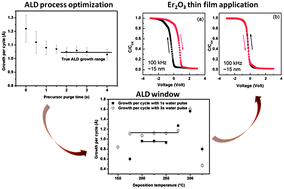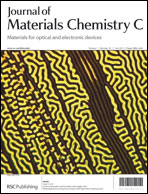Atomic layer deposition of Er2O3 thin films from Er tris-guanidinate and water: process optimization, film analysis and electrical properties†
Abstract
For the first time, the combination of the homoleptic erbium tris-guanidinate metalorganic complex ([Er(NMe2-Guan)3]) simply with


 Please wait while we load your content...
Please wait while we load your content...